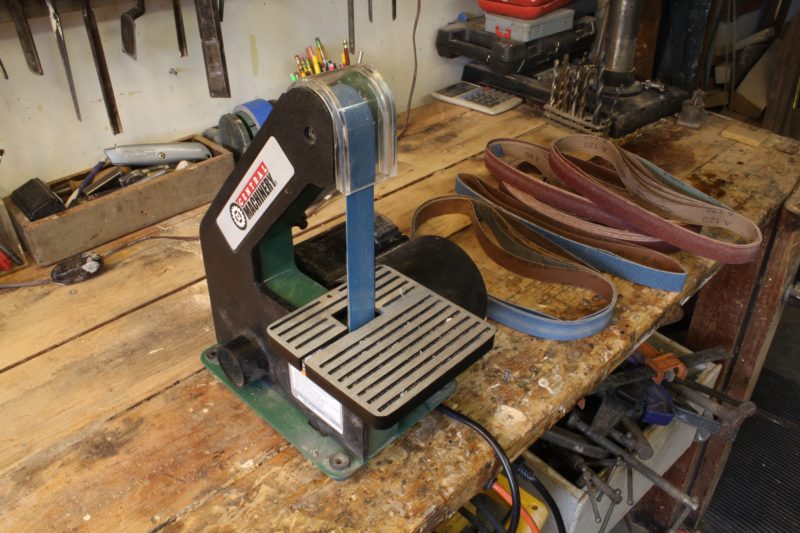 photographs by the author
photographs by the authorThe belts I’ve purchased for the sander range from 40- to 1000-grit. The belts are uncommon at hardware and home improvement stores, but readily available from online sources. They cost about $1.50 apiece when bought in multiples.
The 1″x30″ belt sander I bought recently filled a gap in my shop’s arsenal that I didn’t realize existed because I’d grown so accustomed to the limitations of the tools I have, particularly those I use for working with metal: a 6″ disc sander that has an aluminum plate that takes adhesive sanding discs, a bench grinder with a 30-grit and a 60-grit wheel for coarse work, a Makita blade sharpener, a couple of angle grinders, and a buffing wheel for polishing and honing. Changing grits is impractical on all but the angle grinders, and those are too aggressive for fine work.
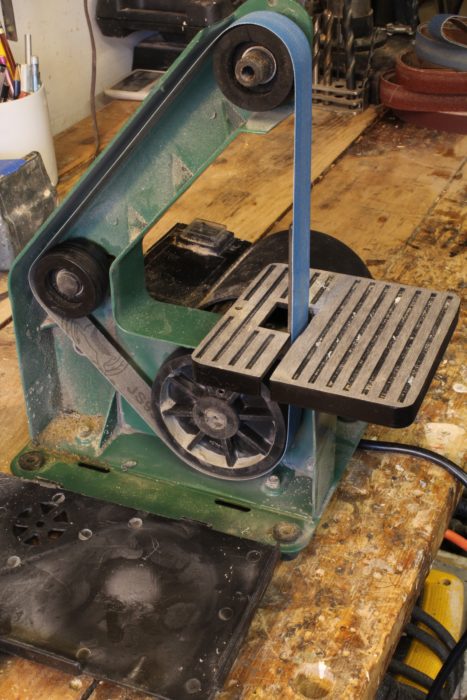
The cover slips off for changing belts. The large drive wheel was out of round but easy enough to fix. The wheel at the back is mounted on a pivot; a spring pushing against he wheel tensions the sanding belt.
I’d done a bit of research before buying the 1×30 belt sander at one of the local Harbor Freight stores, so I wasn’t dismayed when I first turned it on and discovered it had a lot of vibration. The drive wheel was, as I expected, the main culprit; I’d seen some YouTube product reviews about that very problem. So I put a sharp beveled cutting edge on the end of a flat file as a quick stand-in for a lathe tool and ran the sander without a belt or the table in place. A horizontal ledge on the frame served as a tool rest while I carefully worked the wheel to true, which took care of the vibration.
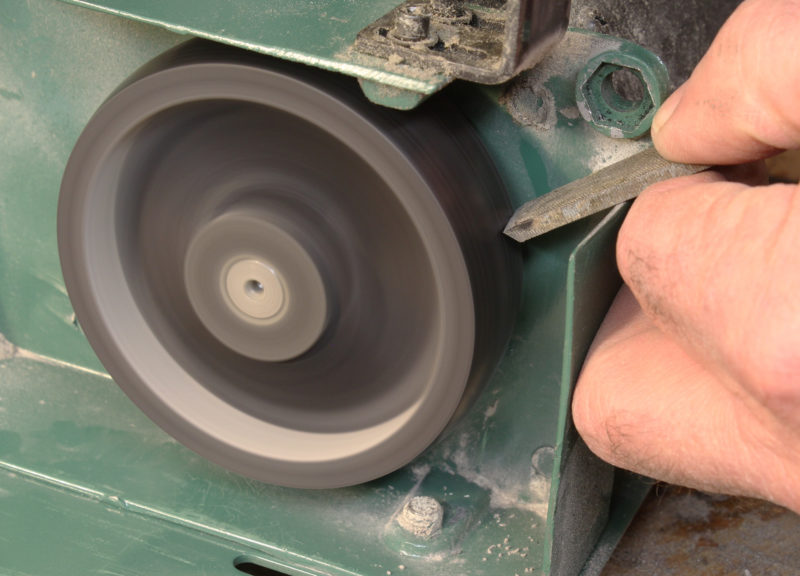
I put a chisel edge on the tip of a file to use as a lathe tool to true the drive wheel. The ledge in the frame served as a tool rest.
It’s a more complicated process to true the smaller wheels, but they seemed to be fine as they were. The rest of the machine needed a bit of tweaking here and there—adjusting the backing plate and loosening the tensioning pulley’s pivot—but I was soon satisfied with the way it works. It’s small for a shop machine: 13-1/2″ tall, sitting on a 6-1/2″ by 8-3/4″ base, weighing just 12 lbs, portable and easy to store.
The sanding belt supplied with the machine had a lapped joint, and every time the it crossed the backing plate it slapped the workpiece away. I went online and ordered two sets of belts with butt joints. The tape backing the joints adds only a bit of thickness, and make a bit of a bump with every pass, but it’s not such great nuisance. My assortment of belts ranges from 60- to 1,000-grit and it takes only 20 seconds to change one for another. The guard over the top wheel comes off, then the side cover, and the belt slips off. With the spring-loaded tensioning wheel at the back pulled forward a bit, the next belt slips on. There’s a screw to hold the top guard in place, but I don’t bother with it.
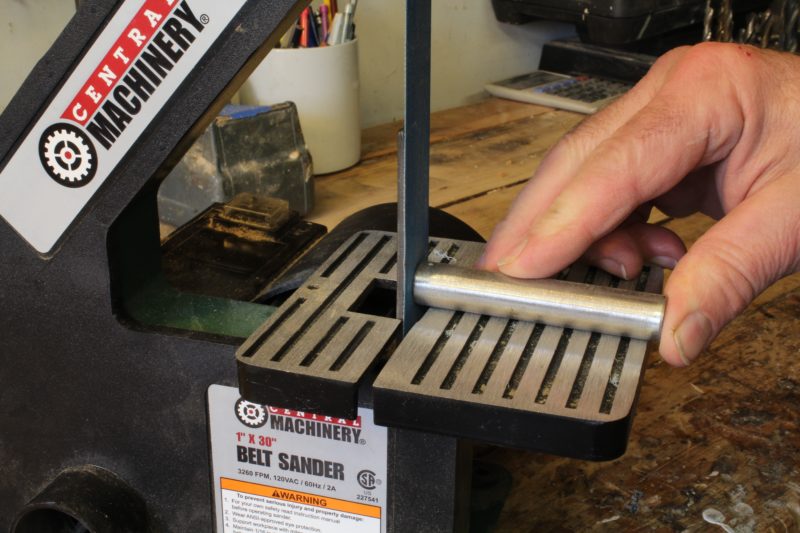
The backing plate keeps the belt straight for working flat surfaces.
The backing plate is 2-1/2″ tall, and so the belt is without backing for the next 3″ to the top wheel. The tensioning wheel has a soft spring, so the upper part of the belt can curve around a workpiece, a nice feature if you’re working soft curves. The motor drives the belts at 3,260 feet per minute. With the right belt, that moves metal and wood quickly and quietly.
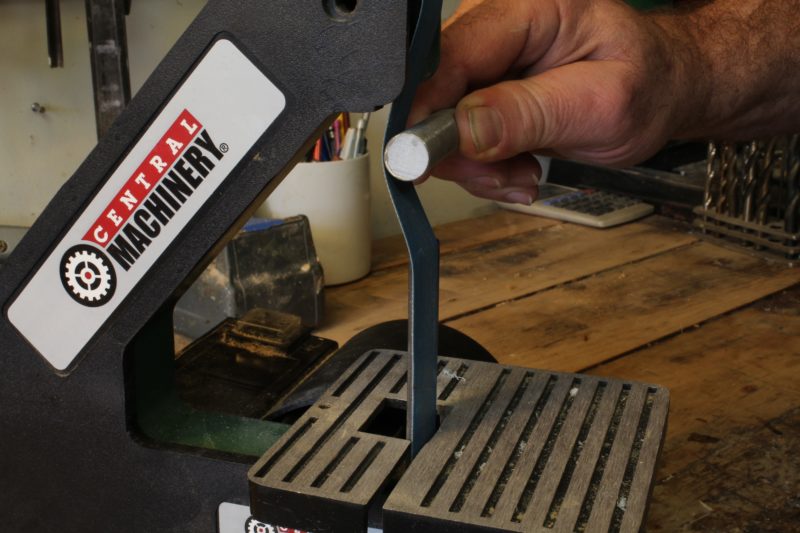
The unsupported portion of the belt works curved surfaces without leaving facets.
I first put the sander to good use when I made a riveting hammer to the instructions in Tom DeVries’ article in the December 2018 issue. I used it to take the zinc plating off of the bolt I used for the hammer head and then to refine and smooth the taper to the peen that I’d roughed in on the bench grinder. The locust I used for the hammer’s handle was quick to dull the cutting edge of the gouge I was using on the lathe, and with a quick sharpening with a 600-grit belt I was back in business. After I cut the handle from the rest of the locust stock, I used a 220-grit belt on the sander to smooth its end. Locust is quick to discolor if heat builds up when worked with power tools, but the belt sander didn’t leave any scorch marks.
When I use the finer belts for sharpening edge tools, the steel stays cool so the risk of losing temper is much less than it is with my bench grinder and disk sander. One of the assortments of sanding belts I ordered included a leather belt and a stick of buffing compound. It puts a high shine and a sharp edge on a blade.
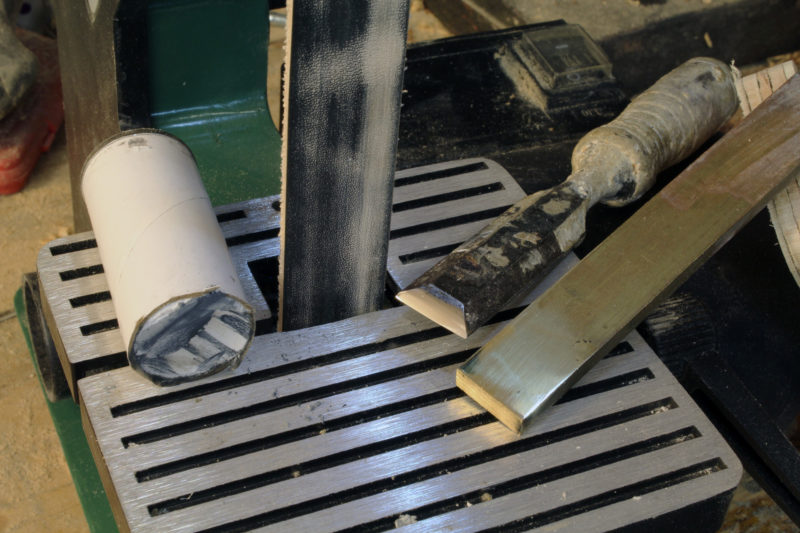
One assortment of belts for sharpening included a leather strop and buffing compound. They finish the job of sharpening and put a high shine on metal.
The belt sander has been earning its keep ever since I got it tuned up. I’ve used it for shaping small pieces of wood for a model I’m building, cleaning up damaged threads on the ends of machine screws, sharpening the chisel that gets the dirty work of cleaning up cured epoxy, and putting crisp corners on the tip of a worn screwdriver. I’ve got space for the sander on one of the shelves in the shop, but I like having it on my workbench, ready to go to work.![]()
Christopher Cunningham is the editor of Small Boats Monthly.
The 1×30 Belt Sander from Harbor Freight lists for $52.99; save 20% with Harbor Freight’s single-item coupon, found in most of their ads. There are similar tools from other manufacturers: Wen, Rikon, Grizzly, Powertec.
Is there a product that might be useful for boatbuilding, cruising or shore-side camping that you’d like us to review? Please email your suggestions.
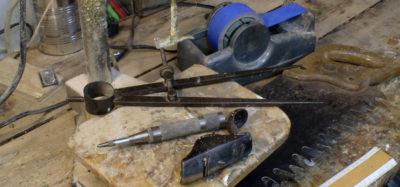



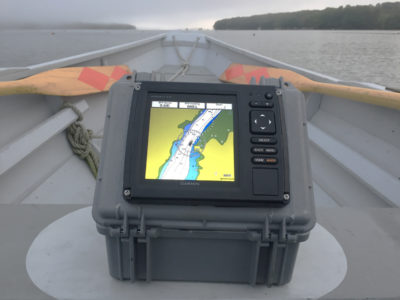
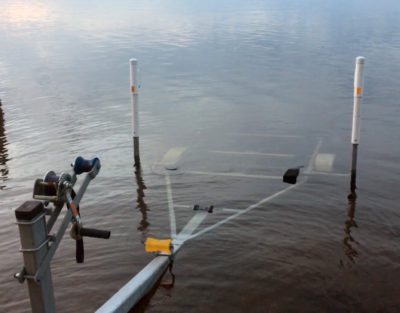
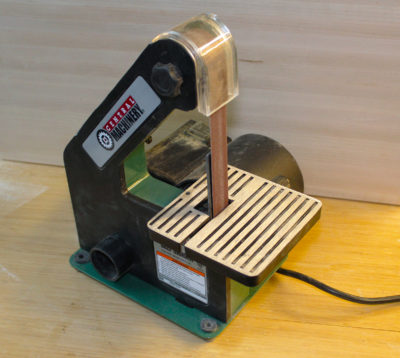

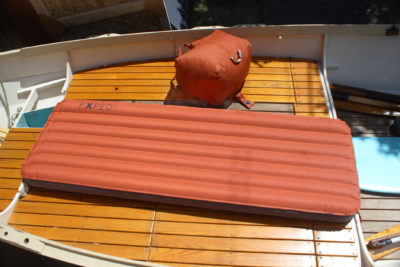
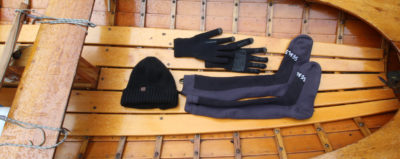
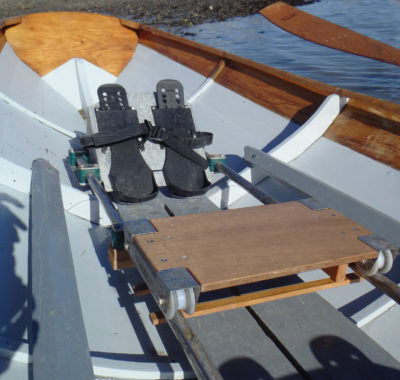

Thanks….Great article…..Next time to Harbor Freight….One in the basket…
Very useful article. Showing how you trued up the drive wheel to make it a smoother tool makes an inexpensive tool decent. I’m going to add this tool to my Harbor Freight shopping list.
I’ve been surprised to be really satisfied with some Harbor Freight tools. Their electric heat gun and oscillating multi tools have held up well and were good values. Thanks much for your publication.
Thanks, Christopher. As soon as I saw the image of the belt sander, I started to think of how much easier it would be to sharpen chisels with one. Also, I’ve moved in the last year and I’m now much closer to a Harbor Freight outlet than before. Hmmm.
I bought mine from MSC; couldn’t pass on the price, but mine is a two-wheeler and 1×40.
Mike
What sites were you able to shop for different grit sanding belts?
I just went on Amazon and searched for 1 x 30 sanding belts. There were lots of grits and lots of sources there.